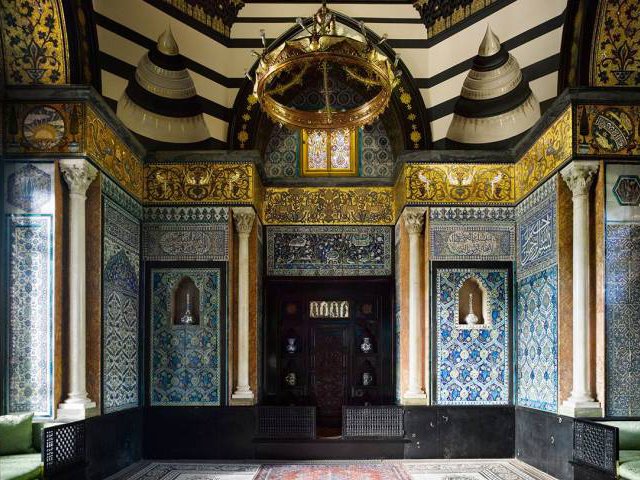By the time he was murdered at home in 2007, the pioneering Pakistani Modernist Ismail Gulgee had enjoyed personal acclaim and official patronage in a long and varied career. He travelled the length and breadth of Pakistan, sketching the country’s diverse patchwork of communities and landscapes, produced portraits from life of world leaders such as Muammar Gaddafi and Ronald Reagan, and decorated some of the country’s grandest state-sponsored mosques. He had worked in a new, Expressionist-inflected calligraphic idiom but, by the time of his death, was leaning towards abstraction, in a series of canvases whose brooding, layered minimalism was interrupted only by the shadowy outline of a moon-like sphere.
In February 2025, his son, the installation artist Amin Gulgee, opened a museum dedicated to his father in Ismail’s old house and studio, a bright, airy space in central Karachi, built by his friend, the architect Nayyar Ali Dada. It is one of several private house-museums that have opened in Pakistan. Alongside Lahore’s Shakir Ali Museum, which is dedicated to another Modernist icon, and Karachi’s textile-focused Haveli Museum, the Gulgee offers a possible answer to the problem of how to preserve cultural heritage when state institutions lag far behind private collectors.
“After the murder, I just locked up my parents’ place,” Amin says in a conversation in his own studio, which adjoins the museum. “Everything was frozen in time, so it was already a bit of a museum.” For nearly 18 years after the incident—in which Ismail Gulgee, his wife and a maid were killed by their driver and an accomplice in an attempted robbery—the finest examples of his work lay under lock and key in the empty building. Meanwhile, Amin worked feverishly to produce his own art. “Everything went black, but the work kept me going,” he says. “The pain wasn’t bad actually.”
Amin says: “My father’s work has nothing to do with mine.” But passing from his space to his father’s museum through a handsome, towering pair of Amin’s calligraphic metalwork doors, you are put in mind of the abstract potential of the Arabic script and the virtuoso, generic flexibility of both father and son.
Abstract calligraphy
After teaching himself the intricate rules of half a dozen calligraphic scripts, Ismail began to receive official commissions starting with the 1974 Islamic Summit in Lahore. In time, however, he moved beyond formal perfection in a series of wholly new, abstract calligraphic paintings, in which he painted forms inspired by Arabic letters in a rich impasto of electric colour on plain backgrounds. Beautifully hung and lit in the carefully renovated space, these works can finally be appreciated in the broader context in which they were created. “My father was a very performative artist,” Amin says. “He loved having people around him when he worked.”
It is rarely possible to pin down an artist’s direct influence, but, looking at Ismail’s work in the context of his contemporaries in south Asia, it is tempting to see the reflection, conscious or unconscious, of abstract painters such as Syed Haider Raza in India or Aminul Islam in Bangladesh. Pointing to the bold, spare lines of a black-and-white drawing on display, Amin says: “You can really feel Zainul Abedin in some of his sketches.” He is referring to the famous Bengali artist who worked in what was then East Pakistan in the 1950s and 60s.
Across South Asia, Modern art receives comparatively little popular or academic attention. It can be very difficult to understand what cannot be seen—many of the finest paintings and sculptures are siloed in private collections in the homes of rich men in Karachi, Mumbai and Dhaka. By opening his doors to researchers, school groups, and individual art lovers on an appointment basis, Amin has rescued his father from that obscurity. More regular opening times for the Gulgee Museum “would require donors and grants”, he says, but for now at least, the new museum is an important start.





